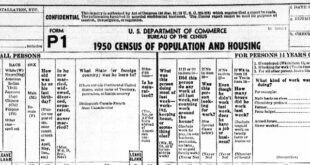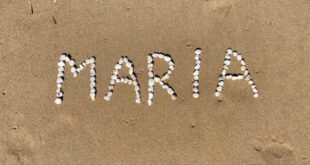Last month we talked about computer software to use to enter and organize your genealogy information. I used Family Tree Maker as the example program but there are others out there. We can’t show screens of every program in this column but it is important that you pick one program and stick with it. If you are new to genealogy, you won’t know the strengths and weaknesses of each program.
The best thing you can do is to read reviews on the internet, or join a local genealogy group and ask the experienced members for advice. There is also a group based in Schaumburg called CAGG-NI (Computer-Assisted Genealogy Group of Northern Illinois). CAGG-NI has speakers every month talking about topics specific to genealogy AND technology. They also have special interest groups that meet monthly or semi-monthly for Family Tree Maker, Master Genealogist, Ancestral Quest/PAF and Mac Reunion. Please see CAGG-NI’s web site at http://caggni.shuttlepod.org/ for meeting and membership information.
So now that you have entered your genealogy data in your software, what can you do with it? The whole point of taking your records and entering them in the computer was to organize them. This is true, but you want to also be able to print charts to show and give to other people. If you were to continue to use hand-written charts for a long period of time, the chart would get cluttered and you would have to Xerox a copy every time you want to visit a relative who wants to see it. You may have a printer that scans and copies, but if you do not, it makes it difficult to reproduce your work.
Each genealogy software program prints their charts a little differently but they are mostly the same types of charts. Each type of chart shows off different aspects of your research and helps you and your relatives focus on specific tasks. The best part of printing charts is that each time you print, you have the most up-to-date information.
A basic report is called the “family group sheet (FGS)”. The FGS lists the father, mother, and their children. Basically, all the important information from the main screen of a particular family appears on the FGS. This is a standard report in every software package. It is used when you are trying to find all the main information about the children in a particular family. Sometimes you know about the three brothers born in America, but you also know that there were two other brothers born in Italy who never came here. The FGS helps you by having blank areas to write new information, which you can then enter in your software.
Another standard report is the “Outline descendant report”. This report starts at a particular ancestor and lists all his descendants. It starts with his wife, then his eldest child. Then it shows the spouse and children of that eldest child. It “drills down” as recently as it can. Then it goes to the second child, and so on. This report can cover as many generations as necessary. This report, and all the others, can be limited to a specific person or group of people. You may not want to print every chart of every person all at the same time! So you pick “Big Nonno” Nicola (1855-1910) and it will list all his descendants for 7 generations. It indents each generation to help you keep then straight.
We have already talked about the pedigree chart. This is the blank chart you started with in the first internet columns. You can print an ancestor chart starting with yourself or anyone else you choose. If you want to focus on the ancestors of your maternal grandmother, you can print just the pedigree chart starting from her. You can limit the chart to as many or as few generations as you wish.
There is a special report called an “hourglass” report. This report starts from a specific individual (usually you, but you can pick anybody) and shows their ancestors in a tree going upward, and their descendants in a tree going downward. So the tree looks like an hourglass. Again, you can limit the number of generations up or down so the chart is manageable.
There is a chart called the “descendant chart”. You select one person in your tree (usually your ancestor from way back) and it will draw boxes downward for each generation. This chart can spread out very wide, especially if everyone had a lot of kids! My favorite feature of this chart is that I can attach a photo of each person and print it on the chart, so there are small photos of everybody in the tree! My relatives love that one (unless I picked a really bad photo of them. Oops!)
The latest version of Family Tree Maker has a “relationship report”. This is a special report that tells you just HOW you are related to your 4th cousin twice removed. You will eventually meet people on social networking sites, or at a wedding, who are distantly related to you but you can’t explain how. In order for this report to work, you and the second person must be connected to the same common ancestors in the tree. This report cannot help you find out how you are a 7th cousin of Garibaldi. But if you have already traced your ancestors back to “Big Nonno” Nicola and you link up your cousin to his parents, grandparents, etc. all the way back to “Big Nonno”, the relationship report will show you each ancestor going back until both connect to the same common ancestor.
Once you have been working for a while, there is a chance that any or all of these reports and charts may get too big to fit on a single sheet of paper. You can adjust the font sizes to help make it fit, but at some point the font will be too small to read. You will have to print the charts on multiple pages. The software will overlap the printing so you can cut the edge from one sheet of paper, and paste it to another sheet of paper so they blend together seamlessly. Then you bring your 26 page chart with you to the next big family gathering! You will impress everyone with your amazing efforts!
Write to Dan at italianroots@comcast.net and please put “Fra Noi” in the subject line.
 Fra Noi Embrace Your Inner Italian
Fra Noi Embrace Your Inner Italian





